Dungeons & Dragons Core Rulebook Set: Guide to Role-Playing
Are you ready to embark on a thrilling journey that transports you to mystical worlds, where you take the helm as swashbuckling heroes, cunning spellcasters, and fearsome creatures? The Dungeons & Dragons Core Rulebook Set serves as your ultimate guide to role-playing-games (RPG), complete with everything you need to fuel your imagination and create an extraordinary adventure! One group of friends found themselves united as hardened heroes within the perilous lands of Faerûn by acquiring this very set.
In this comprehensive guide, we unravel the secrets of the Core Rulebook Set, entwining them seamlessly with intriguing anecdotes from our daring adventurers. Read on to slip into a fantastic realm teeming with possibilities and unleash a new world solely bound by the limits of your own creativity!
Table of Contents
The D&D Core Rulebook Set includes three essential rulebooks (Player’s Handbook, Monster Manual, and Dungeon Master’s Guide) and a Dungeon Master’s Screen. These four items provide you with everything you need to create and play your own adventures in the world’s greatest roleplaying game. Additionally, the set makes for a great foundation for anyone new to Dungeons & Dragons as well as experienced players and Dungeon Masters alike.
Understanding the D&D Core Rulebook Set
Before we dive into the mechanics of Dungeons & Dragons and how to play it, it is essential to understand the core rulebook set that forms the foundation of the game. The Dungeons & Dragons Core Rulebooks Gift Set includes three essential books: Player’s Handbook, Dungeon Master’s Guide, and Monster Manual. These books are not only valuable for new players but also indispensable for experienced gamers who want to expand their knowledge of the game.
Consider these books as your source material or guidebooks that help you comprehend and create an immersive tabletop role-playing experience. Each book accomplishes specific goals. The Player’s Handbook focuses on character creation and gameplay, while the Dungeon Master’s Guide emphasizes world-building and adventure design. Finally, the Monster Manual covers everything related to enemies and encounters.
The core rulebook set empowers both players and dungeon masters alike in creating an engaging game world. It provides players with a wide range of character races, classes, spells, abilities, equipment, feats, and more, making customization limitless. On the other hand, dungeon masters can leverage comprehensive content guidelines provided by these books or establish their own worlds or campaigns while keeping balance and consistency throughout their sessions.
Think about them as ingredients necessary to cook a feast. Each book fulfills a particular purpose; nonetheless, combining all three creates a cohesive blend of flavors that provide an exceptional gaming experience.
Now that we have covered what role these books play let us delve deeper into each one separately.
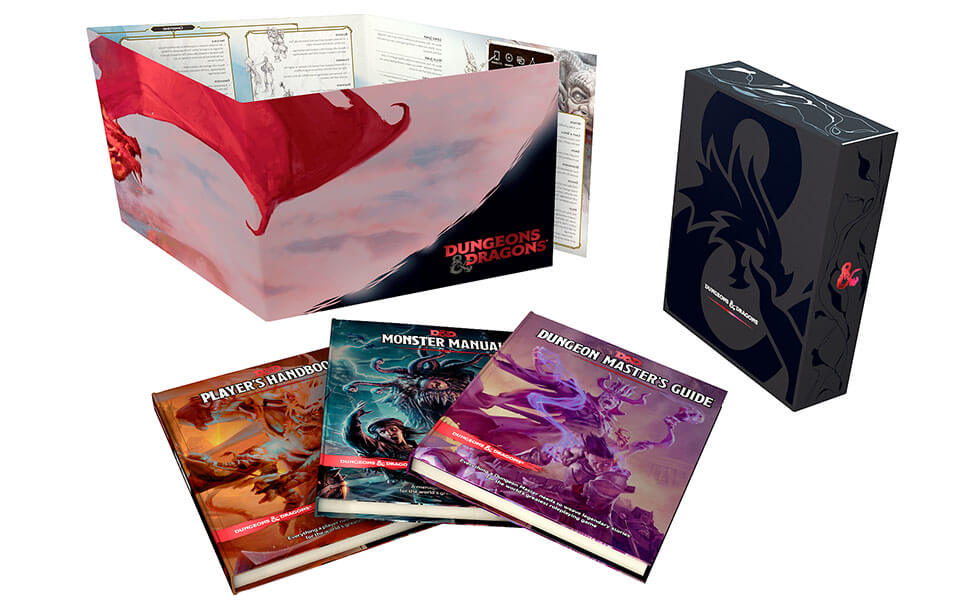
Player’s Handbook: Character Creation and Gameplay
The Player’s Handbook is your go-to book when starting your adventure in Dungeons & Dragons. It contains all the information you need to create a unique character tailored specifically to your playing style. Whether you’re new to D&D or a veteran player searching for something fresh, the Player’s Handbook has everything you need to build your character from the ground up.
To help illustrate what this book contains, let’s consider a few essential parts. Firstly, it covers character creation and customization as players choose a specific race, class, equipment, spells, abilities, and more to create their character. Secondly, it details the game mechanics used in D&D, from how to roll dice to how attacks work.
The Player’s Handbook is more than just a step-by-step instruction manual. It takes each aspect of the game and breaks it down into understandable chunks, making it easy for beginners to enter the world of Dungeons & Dragons. However, that doesn’t mean experienced players can’t take advantage of its wealth of knowledge. Even veteran players will find useful information within the book’s pages, such as new spells or abilities.
Some argue that the Player’s Handbook may seem overwhelming initially. There is an even higher level of complexity with so much information available at your fingertips. However, while there may be some truth to this statement, it’s important to remember that character creation is a significant part of what makes D&D enjoyable. Furthermore, the book is organized logically and includes helpful callout boxes offering guidance and examples, thus alleviating any potential confusion for first-time players.
Now that we understand what the Player’s Handbook offers and what an amazing set of products it is, let us explore its contents further by taking a closer look at specific parts of the book in our subsequent section.
- According to a 2018 article from ICv2, Dungeons & Dragons had its highest sales in its 44-year history, thanks in part to the popularity of its core rulebooks.
- In a 2020 survey conducted by both Wizards of the Coast and Dungeons & Dragons Beyond, around 85% of players reported owning physical copies of one or more core rulebook for D&D.
- A 2019 report from Worldbuilders Market showed that since the release of Dungeons & Dragons 5th Edition in 2014, over 40 million people have played the game, increasing interest in purchasing core rulebook sets for new and returning players alike.
- The Player’s Handbook is a comprehensive guide for anyone interested in creating a unique character and embarking on their own Dungeons & Dragons adventure. It breaks down each aspect of the game into understandable chunks, making it easy for beginners to enter the world of D&D while also offering useful information for veteran players. Though it may seem overwhelming initially, the book is well-organized and includes helpful callout boxes to alleviate any potential confusion. Whether you’re new or experienced with the game, the Player’s Handbook is an essential resource for every adventurer.
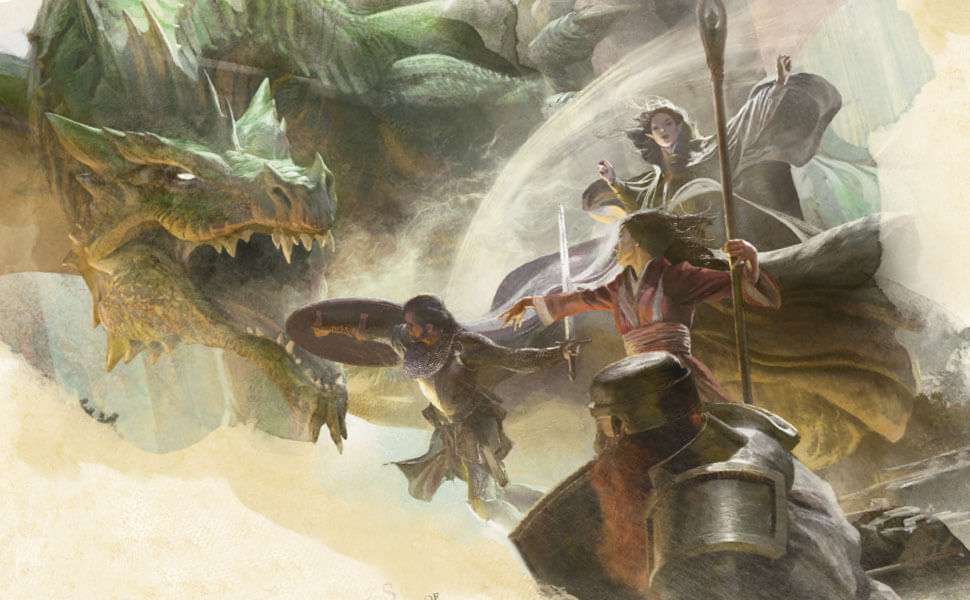
Dungeon Master’s Guide: World-Building and Adventure Design
As a Dungeon Master, there are very few tools as essential to your arsenal as the Dungeon Master’s Guide. This book is full of crucial information about creating and running a campaign, including world-building and adventure design.
One of the most significant benefits of the Dungeon Master’s Guide is that it offers advice for making your game fun and engaging for your players. It includes tips on pacing, balancing combat encounters, and creating memorable NPCs. One excellent example offered in the guidebook to help create an unforgettable story is to ask yourself what would happen if the player characters failed in their quest. Imagining these worst-case scenarios can help you craft a story that feels real and high-stakes.
Additionally, the Dungeon Master’s Guide provides an extensive list of magic items, spells, and traps that you can use to make your game exciting and unique. These elements can add depth to a world-building experience, giving players new challenges that test their skills in innovative ways.
As a painter selects colors from a palette to create something amazing, players and DMs alike have access to everything they need to create their own unique experiences with the core rulebook set. The D&D Core Rulebook Set is like having every color on your palette; with it, you can paint whatever picture you desire.
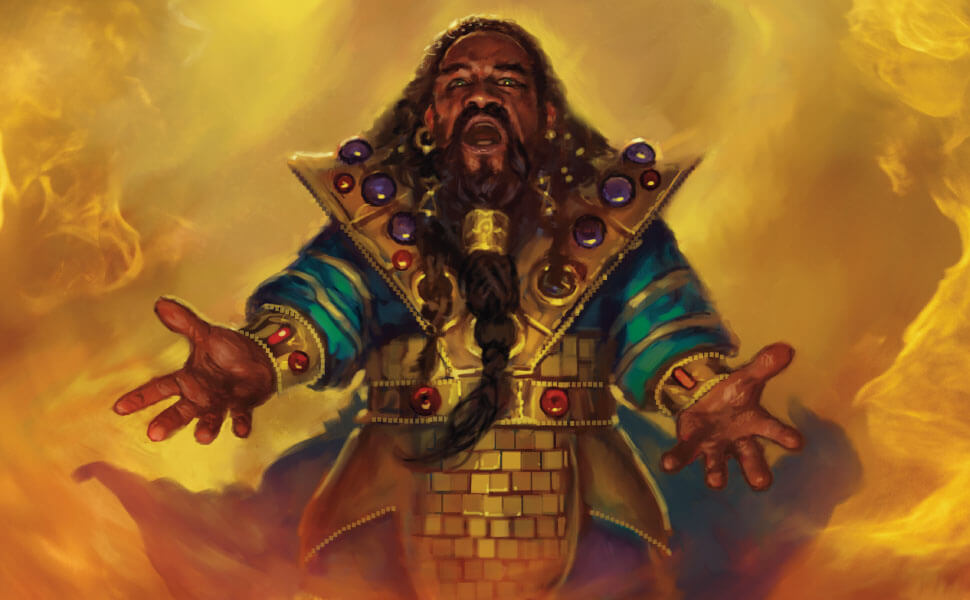
Monster Manual: Enemies and Encounters
The Monster Manual is another essential piece of literature in any DM’s collection. In this book, you will find hundreds of creatures ready to populate the worlds you build. Featuring everything from goblins and orcs to dragons and beholders, the Monster Manual has something for everyone.
A good example of how the Monster Manual adds to gameplay can be seen in how it can make encounters surprising. By introducing creatures that players may not have encountered before, you can build a sense of wonder and excitement in the game. Imagine a group of adventurers coming across a group of goblins when suddenly, out of nowhere, an Owlbear appears. The players would have to react fast to survive!
However, using monsters is not just about combat. Many creatures listed in the Monster Manual have unique abilities outside of battle that can enhance your campaigns. For instance, you could design an adventure around saving a town from an annoying poltergeist or helping a dragon retrieve its stolen treasure.
Ultimately, while combat is an essential component of D&D gameplay, using the Monster Manual to its fullest extent means exploring its extensive lore and utilizing creatures beyond just their stat blocks.
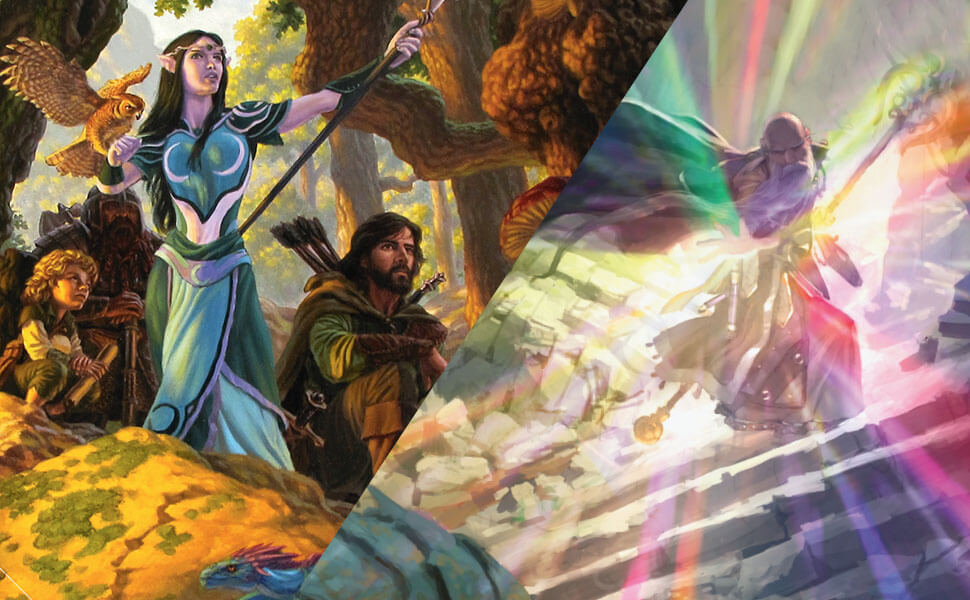
Delving into Character Races and Classes
When it comes to creating a character in Dungeons & Dragons, one of the most exciting parts is choosing your character’s race and class. These choices will have a significant impact on how you play the game and how you interact with the world around you.
Let’s start with races. There are several options to choose from, each with its own set of abilities and characteristics. For example, a Dwarf has a natural resistance to poison and advantage on saving throws against being poisoned, while an Elf can trance instead of sleeping for four hours a day, giving them extra time to focus on skills or guard their companions at night. Humans are often seen as the “everyman” choice, offering versatility and no specific strengths or weaknesses compared to other races.
Each race comes with its own unique flavor that can add depth and interest to your character’s backstory. Some players like to pick racial traits based purely on gameplay mechanics, while others enjoy incorporating those traits into their characters’ personalities.
Now let’s take a look at classes. Dungeons & Dragons offers many class options, ranging from fighters and wizards to clerics and rogues. Each class comes with its own set of abilities, proficiencies, and subclasses that determine how you interact with the world around you.
For example, a fighter relies on strength and weapon proficiency, often charging headfirst into battle with a sword or axe in hand. They can be excellent protectors and deal out damage quickly but may lack versatility outside of combat situations. On the other hand, a rogue can use sneaky tactics and impressive agility to avoid combat altogether or dispatch enemies without it ever coming down to brute strength.
Choosing a class is often seen as more important than choosing a race because it ultimately determines how your character interacts with challenges they face throughout the game.
Choosing your character’s race and class in Dungeons & Dragons is like choosing your own adventure story. Each choice you make will lead you down a unique path, with its own ups and downs. It’s important to consider not only what you want to get out of playing the game but also how you want to become invested in your character’s backstory and roleplaying opportunities.
Furthermore, selecting a race or class that doesn’t fit well within your group’s party makeup can lead to complications in gameplay. For example, if everyone else is playing ranged attackers, and you choose a melee-focused fighter, it may be challenging for your group to work together effectively in combat situations.
That being said, some players enjoy intentionally choosing unusual combinations to up the challenge or add interest to their gameplay.
Ultimately, the most important thing is to pick options that feel true to the character you want to play while still keeping in mind the practicalities and dynamics of the larger group.
Mastering the Art of Dungeon Mastering
Being a Dungeon Master (DM) is a unique experience. You are both a storyteller and an arbiter of rules, creating an immersive world for your players while also ensuring fair play and consistency.
One essential skill for any DM is world-building. This involves developing an overarching narrative, populating it with interesting characters, designing exciting locations for encounters, and crafting rules systems tailored to your player’s needs.
A significant part of world-building comes down to improvisation skills. Even with detailed planning, players can surprise you at any time with unexpected actions that require quick thinking on your part. The key is anticipating these moments as much as possible while remaining flexible when they occur.
Another crucial skill for DMs is managing player expectations. Clear communication before the game begins can help ensure that everyone is on the same page about what kind of tone and style of gameplay they’re interested in.
Finally, mastering the art of pacing can help keep players engaged and interested. Balancing combat encounters with exploration and roleplaying opportunities is essential to avoiding burnout and keeping each session exciting.
For example, if your players are struggling with a particular combat encounter, breaking up the battle with some witty banter or an unexpected plot twist can break tension and allow everyone to have more fun.
However, there’s always a risk of straying too far off topic when trying to keep things lively. It’s important to keep gameplay moving forward while still allowing for character moments and roleplaying opportunities.
Even experienced DMs can benefit from continuing to work on their skills through practice, reading blogs and books about game mastering, and staying open to feedback from both players and fellow DMs.
Remember that at its core, Dungeons & Dragons is a collaborative storytelling experience. Whether you’re designing intricate worlds as a DM or embodying unique characters as a player, the most important thing is to have fun and share that joy with those around you.
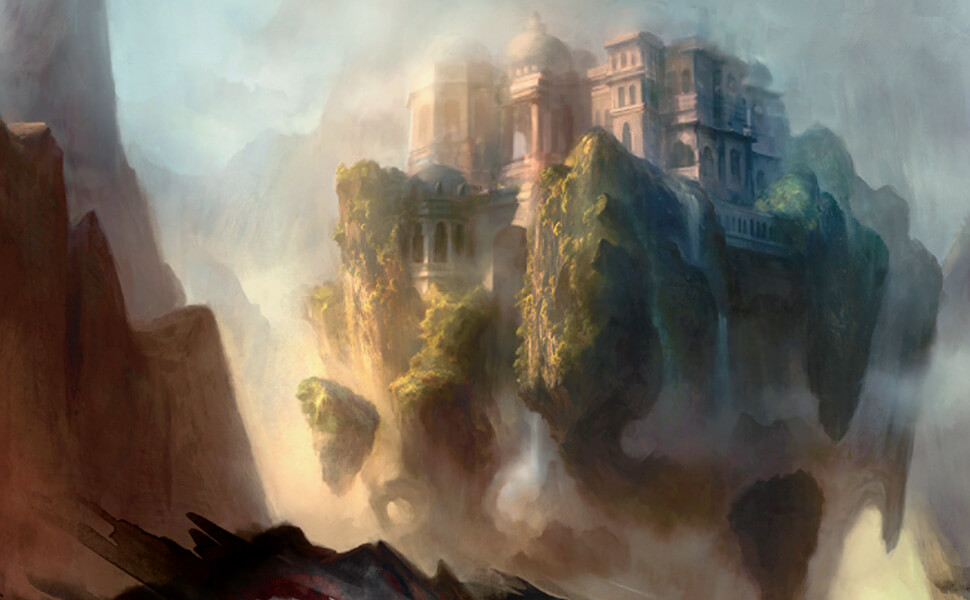
Exploring Official and Homebrewed Content
One of the greatest aspects of Dungeons & Dragons is the vast amount of content available to players. From official modules to player-created homebrewed campaigns, there is always something new to discover and explore. In this section, we will delve into the different types of content available and how they can enhance your gaming experience.
Official content includes published adventure modules, monster manuals, and other supplements created by Wizards of the Coast. These materials are thoroughly playtested and designed to be balanced for fair gameplay. They offer a reliable source of adventure and provide a standard framework for players and Dungeon Masters alike.
Homebrewed content, on the other hand, is created by players using their own ideas for an adventure storyline or data for characters. This content is not playtested or officially supported by Wizards of the Coast. However, it offers infinite possibilities for customization and encourages creativity among players.
One great example of exceptional official content is “Icewind Dale: Rime of the Frostmaiden,” a module set in a frozen land filled with dangerous creatures. The module provides a well-thought-out story arc with challenging battles and puzzles designed to keep players engaged. Additionally, it features beautiful illustrations that enhance immersion in the game world.
Another excellent example of official content would be Dungeons & Dragons’ newest addition to their line-up, Van Richten’s Guide to Ravenloft. The book provides an exploration scenario entering multiple domains ruled by darklords & curses. Along with that, van richten’s guide provides various character options like dark gifts for when one meets the dark lords.
Players can also discover unique homebrewed content through online communities such as Reddit or Discord servers. Some homebrewed modules take classic fantasy tropes and put a unique spin on them like incorporating technology as seen in Eberron campaign setting.

While official content provides a standard for balance and consistency, homebrewed campaigns allow for more flexibility and player input into the game world. Some people argue that homebrewed content can unbalance gameplay or may not fit within the game’s overall tone. Ultimately, it comes down to personal preference when deciding which type of content to use. However, an important aspect of playing D&D is open communication with all members involved in the game session.
Using official content can be compared to following a recipe; it provides a tried-and-true method to achieve a particular outcome. On the other hand, using homebrewed content is like cooking without a recipe; there are no guaranteed results, but there is room for experimentation and discovery.
Exploring both official and homebrewed content adds diversity to your D&D gaming experience. Whether you follow an official module, create your own adventure entirely from scratch, or somewhere in between, finding the right balance of both can provide endless hours of fun.
Provide the thrill of exploration
With Dungeons & Dragons, a roleplaying game not like other card games, you and your pals are able to craft your own tale and every fan of this RPG will love — venturing into an imaginary realm where the possibilities are infinite.
This bundle includes all of the novels required to engage in the game, with unique foil coverings that are not accessible anywhere else, plus an exclusive metallic Dungeon Master’s shield in each copy.
This set is an ideal present for any Dungeons & Dragons enthusiast, whether they’re a beginner, a prospective Dungeon Master, without any books of their own, or a collector looking for the next great item.
This will make the ideal birthday present or Christmas present for D&D veterans or the miniatures product lover.
The Player’s Handbook, the Dungeon Master’s Guide and the Monster Manual
These three texts provide the basis for any Dungeons and Dragons journey, whether crafting a unique world or jumping into an already formed universe.
The Player’s Handbook is an indispensable tool for players and Dungeon Masters in the game of Dungeons and Dragons, providing instructions on game rules, character development, and a comprehensive list of over 350 spells.
The Dungeon Master’s Guide provides instruction on how to be a Dungeon Master for a Dungeons & Dragons game, construct worlds for the players’ exploration, furnish these worlds with memorable discoveries, and craft a gripping narrative.
The Monster Manual—an abundance of otherworldly beasts and captivating personalities for Dungeon Masters to fill their D&D environments with, containing all the necessary components to conduct enjoyable experiences.
A visual aid to assist the Dungeon Master during gameplay
For all the labor they go through to provide pleasure to their participants, the Dungeon Master deserves something extraordinary!
Along with the three vital rulebooks, this collection includes a Dungeon Master’s Screen. This shield assists the DM in concealing their memorandum and dice rolls from participants. It also contains data that they can quickly consult in order to maintain the game effectively.
Extraordinary Foil Wraps
Special Metallic Wrappings of foil treatments
This fabulous collection contains three books with brilliant and dazzling metallic foil covers, an attractive addition to any library.
View Blocking Panel
The Dungeon Master’s shield is made with a dazzling foil cover editions to make the vibrant visuals even more captivating, provoking players to enter into a dangerous, mythical realm.
Participating in Dungeons & Dragons
Embark on a Quest
Explorers come in numerous forms. Locate one that provides enjoyable for you.
The basics for crafting characters are outlined in the Player’s Handbook, which encompasses a range of backgrounds such as an elven cleric banished from society due to their diverging from customs and a dwarven paladin attempting to expiate past indiscretions. Expand on them however you decide.
Take part in the celebration
Playing Dungeons & Dragons unites people and builds new connections. The moments shared create inside jokes; emotional conflicts create unforgettable memories–whether struggling against adversaries, participating in political schemes, or working together to unravel a mystery, your team will be there for you.
Decide Your Own Destiny
The forest is becoming dark. A large clump of ivy hides the ruins of an old fortress. What is your occupation?”
In Dungeons and Dragons, you have unrestricted possibility. The Dungeon Master acting as the storyteller of your experience can extemporize in response to any decision you make, causing what happens subsequent to be changeable. Are you bold enough to continue?
